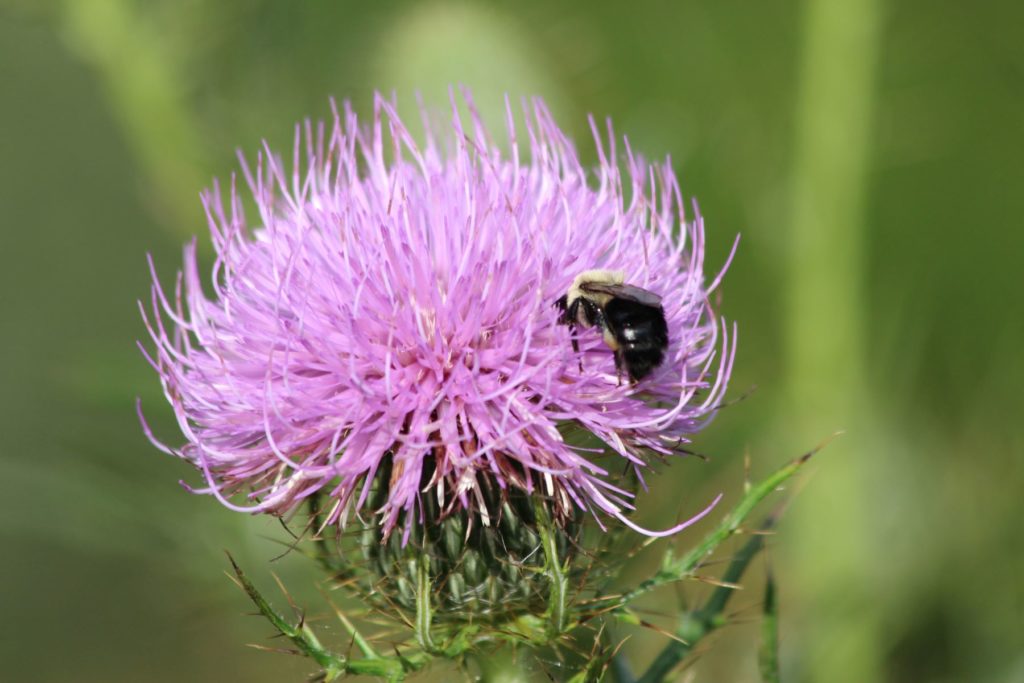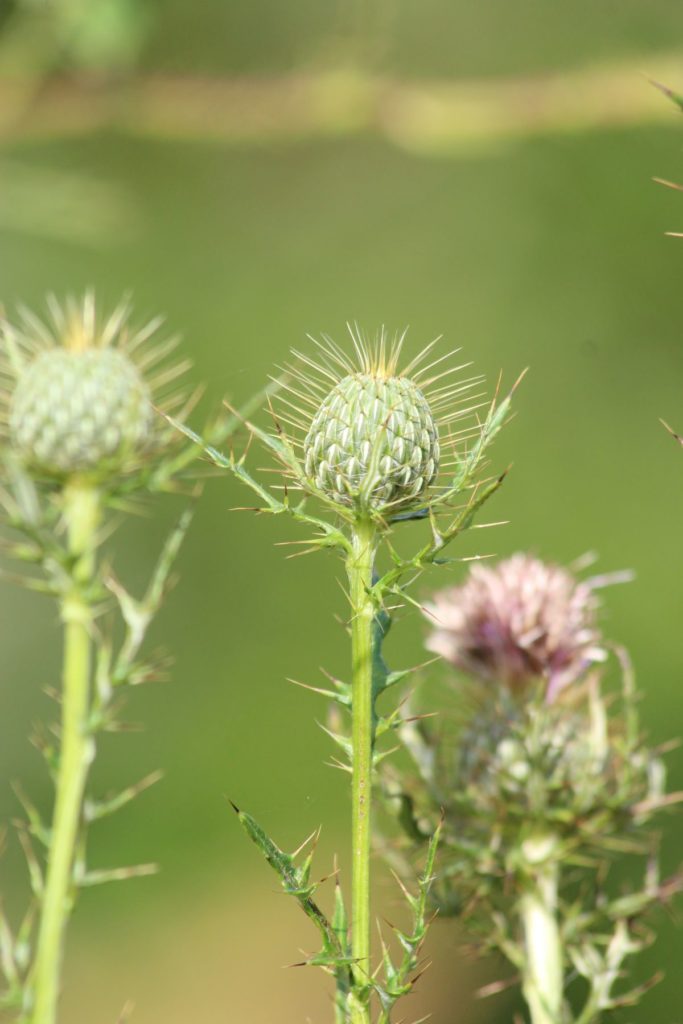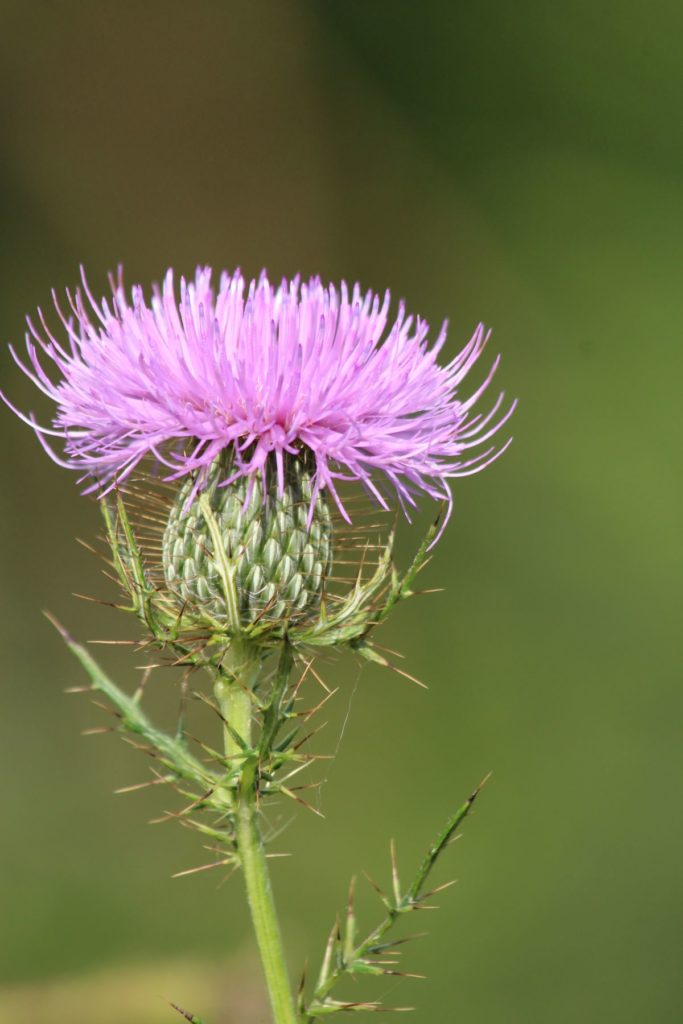
What’s in Bloom | Field Thistle
September 1, 2020
Field thistle (Cirsium discolor) is a biennial herb native to the eastern half of the United States and Canada. It grows in a variety of soil, sun, and water conditions and can be found in pastures, forest edges, and roadsides.
During the first year of growth, field thistle appears as a rosette of leaves close to the ground but can eventually grow 3-8’ tall. In order to produce flowering stems, it must typically survive at least one winter. Its hairy stems are 2-8” tall and branched. The leaves are up to 9” long, are alternately arranged, have deep spiny lobes, and are hairier on the underside than the top surface.
Field thistle blooms late summer through fall, though individual plants only stay in bloom for about a month. The flower head is about 2” wide and is made up of many, thin tube-shaped flowers. The flowers form a mushroom shape and are lavender to light pink in color. The base of the flower is green, scaley and covered in sharp spines.
Thistles in general get a bad reputation since many are highly invasive. However, it is important not to confuse native field thistle for the aggressively spreading invasive thistles in our area. Unlike non-native thistle species, field thistle does not spread so aggressively. Features which help define the difference between field thistle and non-native thistles are its largely spineless stems and the nearly white undersides of its leaves.
Benefits to Biodiversity | Field thistles’ large flowers are full of nectar and attractive to pollinators such as butterflies, moths, bees, and hummingbirds. It is a larval host to the Painted Lady butterfly (Vanessa cardui). The seeds are eaten by birds including the American Goldfinch (Spinus tristis). Adding native fields thistle to a garden or meadow will bring an abundance of food for beneficial wildlife and will not be difficult to control like other invasive species.
Sources: USDA, Illinois Wildflowers

